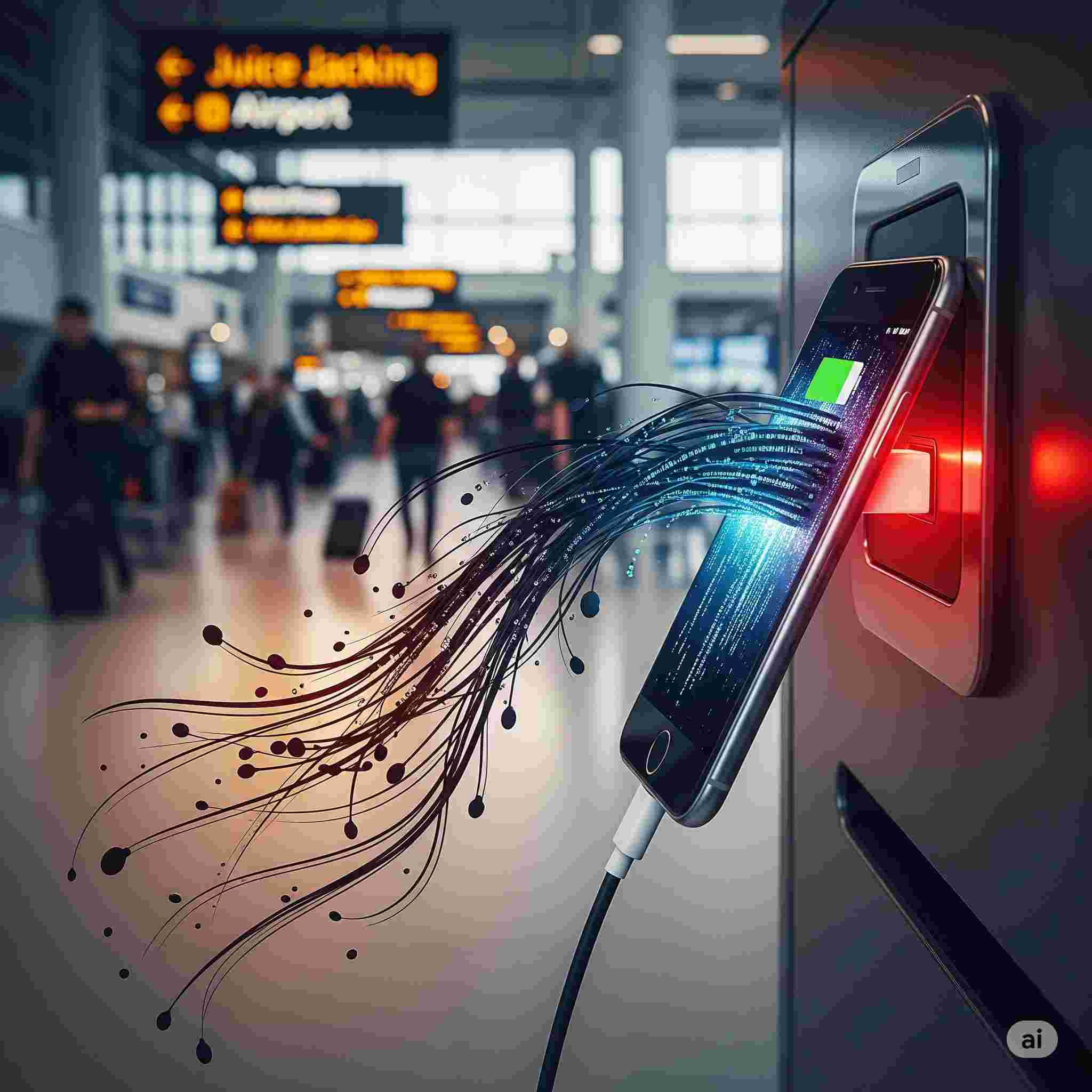In our hyper-connected world, a dead phone battery can feel like a mini-crisis. Those convenient public charging stations in airports, coffee shops, and malls often appear as a beacon of salvation. But what if that free charge came at a hidden cost? Enter Juice Jacking, a cyber threat that’s as sneaky as it is dangerous.
What is Juice Jacking?
Imagine plugging your phone into a public charging port, expecting nothing more than a power boost. With juice jacking, you could be unknowingly giving a malicious actor access to your device. Here’s how it works:
Traditional USB cables, while primarily for charging, also transmit data. Juice jacking exploits this dual functionality. Cybercriminals can modify public charging stations or even individual cables to secretly install malware onto your device the moment you plug in. This malware can then:
- Steal your data: Access your photos, contacts, emails, text messages, and even banking information.
- Install spyware: Monitor your activities, track your location, and record your conversations.
- Lock your device: Hold your phone hostage for a ransom.
- Corrupt your files: Damage or delete important data on your device.
It’s a silent attack – you won’t see a pop-up warning or feel anything unusual. Your phone will simply appear to be charging as normal, while in the background, your privacy is being compromised.
How Prevalent is It?
While not an everyday occurrence for most, juice jacking is a recognized threat. Law enforcement agencies and cybersecurity experts have issued warnings about it for years. The danger lies in its deceptive simplicity and the trust we often place in seemingly innocuous public utilities.
Protecting Yourself from Juice Jacking:
The good news is that protecting yourself from juice jacking is relatively straightforward. Here are some essential tips:
- Prioritize Wall Outlets: The safest way to charge your device in public is by plugging your own charging cable into a traditional AC wall outlet. This provides power only, with no data transfer capabilities.
- Carry Your Own Portable Charger (Power Bank): This is by far the most secure option. A fully charged power bank means you’ll never have to rely on a public charging station.
- Use a “Charge-Only” Cable (USB Condom): These special cables are designed to physically block the data pins, allowing only power to flow through. They are an inexpensive and highly effective defense against juice jacking.
- Charge Your Device While Off: If you absolutely must use a public charging port, power off your device before plugging it in. While not foolproof against all attacks, it significantly reduces the risk of data transfer.
- Be Wary of Unknown USB Drives/Cables: Just as you wouldn’t pick up a random USB drive and plug it into your computer, be suspicious of any unfamiliar charging cables found in public.
- Keep Your Device’s Software Updated: Regular software updates often include security patches that protect against known vulnerabilities.
Stay Vigilant, Stay Safe
Juice jacking is a stark reminder that convenience can sometimes come with hidden risks. By understanding the threat and adopting simple preventative measures, you can keep your devices and your personal information safe from this sneaky form of cybercrime. Don’t let the convenience of a free charge compromise your digital security.


